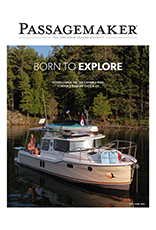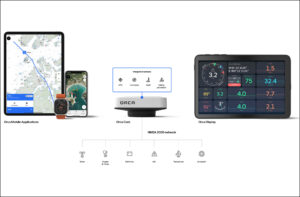
Despite this having been John Fisher’s first Volvo Ocean Race, he was an experienced sailor and racer, having competed in multiple Sydney-to-Hobart races. But as every sailor knows; we are at the whim of the sea and the sea is an unforgiving place.
On Monday March 26th, at approximately 13:42 UTC, John Fisher was thrown overboard during an accidental gybe in challenging conditions. Team Sun Hung Kai/Scallywag was enroute to Itajai, Brazil, from Auckland, New Zealand, on the 7,600 mile 7th leg of the Volvo Ocean Race. They were approximately 1,400 miles west of Cape Horn as they crossed the remote and challenging Southern Ocean. Race reports from the previous several days noted that the sailing was getting difficult as race boats entered classic conditions of that stretch of open ocean, with sustained gale force conditions and a consistent five meter sea state.

We don’t know most of the details surrounding John Fisher’s accident, but after conducting a 12-hour exhaustive search and rescue operation in the nearly impossible weather conditions, Team Sun Hung Kai/Scallywag crew had to make the heartbreaking decision to break off their search and head for safe harbor in Chile, leaving John Fisher considered lost at sea. The Maritime Rescue Coordination Centre, working with the Volvo Ocean Race Committee, has vectored the closest passing ship to the area where the accident occurred to assist in the search, however, that ship was more than a day away. Given the cold water and extreme conditions, hope is diminishing that John Fisher will be found.
Team Manager Tim Newton, who has been in touch with the crew said, “The conditions are extremely challenging, with strong winds and a forecast for a building sea state over the next couple of days. Our sole focus, with the assistance of Race Control in Alicante is to get the team into port safely.”
- On Monday, 26 March, SHK/Scallywag was racing in Leg 7 of the Volvo Ocean Race from Auckland, New Zealand to Itajai, Brazil, approximately 1,400 nautical miles west of Cape Horn
- Weather conditions were 35-45 knots with 4 to 5 metre seas with showers reducing visibility. It was 15 minutes before sunrise
- The team was sailing with a single reef in the mainsail and the J2 jib. The Fractional 0 (FR0) sail was hoisted but furled
- At roughly 1300 UTC SHK/Scallywag surfed down a large wave leading to an accidental crash gybe
- John Fisher was on deck, in the cockpit. At the time, he was moving forward to tidy up the FR0 sheet and had therefore unclipped his tether as was standard procedure when moving between positions.
- As the mainsail swung across the boat in the gybe, the mainsheet system caught John and knocked him off the boat. The crew on board believe John was unconscious from the blow before he hit the water
- He was wearing a survival suit with a wetsuit hood and gloves and a lifejacket
- The JON buoy and the horseshoe buoy were thrown off the back of the boat to mark the position
- It took some time to get the boat under control and motor sail back to a position near where the man overboard occurred
- At 1342 (UTC), the team informed Race Control, by email, that there was a man overboard and they were returning to the MOB position to start a search pattern
- With input from the Maritime Rescue Coordination Centre and Race Control in Alicante, a search and rescue operation was carried out for several hours but there was no sign of John, the horseshoe buoy, or the JON buoy
- With weather conditions deteriorating, a difficult decision was taken to abandon the search and preserve the safety of the remaining crew.
Days before the accident John Fisher was quoted as follows, in an interview about the 7th leg of the race, “Not many people come to such remote spots on the planet so it is a weird thing. But it’s not something that we dwell too much on.”

The team is headed to the closest port and despite their grief, they will have to remain focused and determined as the conditions are expected to remain poor for the next several days. As Team Manager Tim Nolan noted once the team reaches port, “We [will] have time to de-brief more fully and ensure that any lessons that can be learned from what happened to John are incorporated by the rest of the fleet going forward.
“That would be a tremendous legacy for John, who spent so much of his time passing the learnings from his lifetime of experience at sea onto the younger sailors on our team.”
There will be much to learn from this tragedy in the months ahead, for now our thoughts and prayers are with John Fisher’s family and crewmates. All mariners look to learn from such tragedies to better protect ourselves on the sea. But it is important to remember that even the most experienced are subject to her whims.







